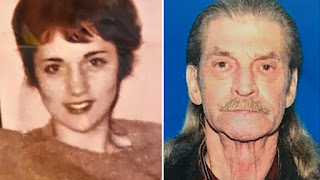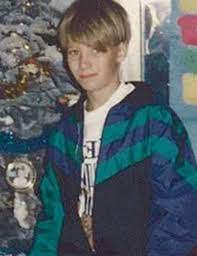DNA solves Orange County's oldest cold case
The case we have for you today is Orange County, California's oldest cold case. In 1968, the body of an unknown woman wearing a floral-print blouse, purple pants, loafers, and a costume ring with a large blue stone set in a silver band was found in a drainage ditch near New land Street and Yorktown Avenue in Huntington Beach, California.
Three young boys accidentally discovered the troubling crime scene, as they wandered closer to what they realized, was, in fact, a human body. They quickly called the police, who were then dispatched to the scene of a crime that would come to haunt Orange County for decades.
The woman's body had no form of identification at all. In fact, it appeared as though the woman had been spotless and left purposefully unidentifiable. But one thing was for certain, the woman had not come to the drainage ditch on her own accord. She had been beaten, assaulted, and her throat cut, yet very little evidence was actually collected from the scene, as almost none had been left behind.
The unknown woman's killer had been very thorough, but there was always room for error. Near the body were the slightest remains of a cigarette butt that had been carelessly discarded. As it turned out, the DNA from the cigarette matched the DNA swabbed from the assault kit used to pick up traces left on the mystery woman.
The woman was estimated to have been somewhere in her mid-20s at the time of her death. Despite multiple attempts at trying to find the family of the woman, investigators on her case constantly came up empty-handed. This woman, it had seemed, was unknown to everyone, and it didn't look as though anyone had even reported her missing. Just like that, the search for her identity went virtually nowhere.
Unfortunately, so did the search for her killer. That is, until over five decades later. Orange County Sheriff's Department reopened Jane Doe's case and uncovered some long sought-after answers.
Finally, after years of searching, Orange County investigators were able to find a DNA match from the profile produced from the samples collected off of the woman's body and, of course, from the forgotten cigarette butt.
Through the use of investigative genetic genealogy, police were able to map out the possible family tree of the murderer. More so than that, they were able to narrow down the killer to one man, in particular, a man by the name of Johnny Chrisco. Chrisco's identity came to light in 2019, allowing for investigators to come one step closer to fully understanding what had happened to the mystery woman all those years before.
However, once more, investigators found themselves at a loss for answers when they learned that Chrisco had died of cancer in 2015, just four years before the world learned of his heinous endeavors in Southern California. Chrisco hadn't been a suspect at the time of the murder, but it is reported that he had been discharged from the Army after only three years when a psychological exam determined he had a pattern of being quick to anger, easy to feel unjustly treated, chronically resentful, immature and impulsive.
Even though, authorities were successful in finding out who had been responsible for Orange County's longest unsolved homicide. They were disappointed that the killer had narrowly evaded facing the consequences of his actions in life.
More so than that, they knew that their investigation could not end until they were able to identify the victim. Having once again utilized the technology associated with investigative genetic genealogy, Huntington Beach police officers were able to finally name the woman who had been unknown for so long. Her name was Anita Louise Plateau, and she had been a long way from home when she was found dead in Southern California. Anita Louise Plateau was originally from Maine, where her parents, seven siblings, and extended family lived their entire lives.
In early 1968, she had sent a letter to her family saying that she had found work as a waitress in California and was living with her friends 11 months before she died. In the letter, she said she would return home that year, but they never heard from her again. When investigators were finally able to reach out to Anita's remaining family members in late 2020, it became clear that Anita's siblings never gave up looking for their long-lost sister.
Laurie Quirion, Anita's 60-year-old niece, said, "It is a big weight lifted off. She's not missing anymore. She is close to us now. We have a sense of peace that comes with that."
Cold cases are often chilling and frequently disheartening to those associated with the victims of such brutal crimes, as the one we have discussed today. However, it is not entirely impossible to uncover the truth in such instances, even decades later.




Comments
Post a Comment